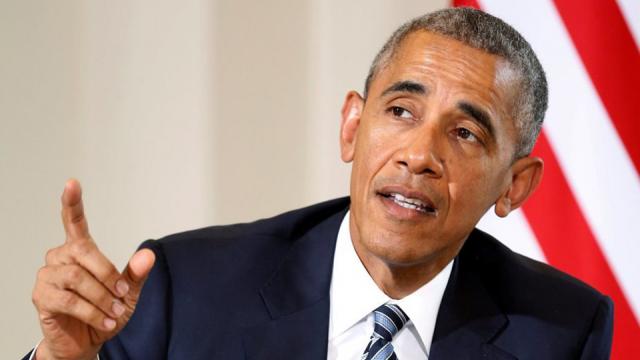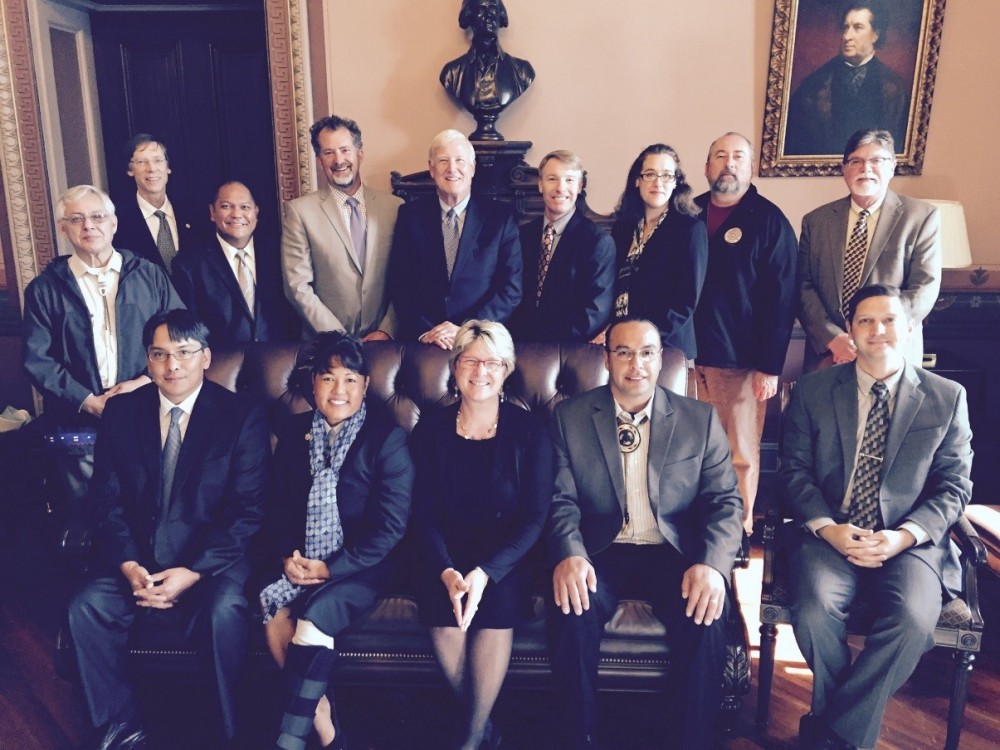
Strengthening the hand of advocates for action on the climate crisis, the Obama administration issued final guidance calling on federal agencies to fully consider greenhouse gas emissions, global warming, and the costs they impose on society in deciding on major projects.
The action last week by the White House's Council on Environmental Quality has been under intense discussion for six years. It could significantly affect how the government decides, for example, whether to approve major infrastructure projects, how to manage national forests, and how much to charge for leases of coal on public lands.
The White House called it "another big step in the Administration's effort to consider how all types of federal actions will impact climate change and identify opportunities to build climate resilience."
The fossil fuel industry and its allies in Congress had fiercely opposed the administration's proposal, which was subjected to extensive public review and comment. But the administration held firm on the policy's core elements.
The result is an unusually significant updating of procedural safeguards called for under the landmark National Environmental Protection Act, or NEPA, first passed in 1969.
That law's iconic "environmental impact statements" have endured as a powerful, but not omnipotent, tool used by generations of environmental activists, from the Tellico Dam to the Keystone XL pipeline. This guidance sharpens that tool.
Environmental advocates embraced the announcement, and doubtless it will play a role in future litigation over a wide range of government activities where these groups fight to rein in the pollution that is warming the planet beyond any human experience.
Rhea Suh, president of the Natural Resources Defense Council, called it "a gamechanger."
"This is a long awaited and essential new tool," said Liz Perera, climate policy director at the Sierra Club.
Fossil fuel allies saw it differently.
"The guidance will increase the role of climate politics, with all their irrationality and rancor, in NEPA reviews," wrote Marlo Lewis of the Competitive Enterprise Institute.
In reality, the new guidance hardly slaps chains on federal agencies as they consider whether to approve policies and projects with big carbon footprints. They have always enjoyed considerable leeway under NEPA, and judges have often—but not always—deferred to the judgments of agencies, to the frequent chagrin of environmental challengers.
This will continue—and the new approach does not extend NEPA's reviews over any new kinds of federal activities, or impose concrete steps such as limits on emissions.
"Unfortunately, the CEQ left whether to use this powerful tool up to agency discretion," said Sen. Sheldon Whitehouse (D-R.I.), a vocal proponent of climate action. "That's a missed opportunity."
But if it withstands likely challenges in Congress and the courts, it will broaden the use of climate litmus tests like the one President Obama imposed as he considered, and ultimately rejected, the Keystone XL pipeline.
That example, until now, has been more the exception than the rule. Detailed examinations of how federal agencies have considered climate factors during environmental impact assessments, such as reviews by the Sabin Center at Columbia Law School, suggest that they often fall short. While there has been some progress, it has been halting, considering the gravity of the climate problem.
The new guidance recommends that agencies make significant adjustments. They should:
-
Consider not just the immediate effects of their decisions, but those lasting long into the future, when climate impacts will be more severe.
-
Attempt to provide useful approximations of emissions even when those emissions are not easy to estimate because of market and other complexities.
-
Look not only at how their actions may change the climate, but also at how climate change impacts, such as sea rise or drought, might affect a proposed project. Both questions are within NEPA's scope.
In one especially arcane and hotly debated aspect—how to quantify in dollar terms the future damages from greenhouse gases emitted today—the new guidance permits, but does not require, the use of an economic calculation known as the "social cost of carbon," or SCC.
The fossil fuel industry has long argued that the calculation, which economists consider a useful in examining the price society ought to pay to prevent additional pollution, to be fraught with uncertainty. But the administration has defended its use in recent years while bolstering the technical aspects of how this price on carbon is calculated.
In the guidance, the White House said that NEPA does not flatly require agencies to conduct any kind of monetary cost-benefit analysis of federal decisions (although some other statutes do). But agencies may choose to when they deem it useful, and in those cases, the guidance steers them toward calculating of the social cost of carbon as one sound approach.
Jayni Hein of the Institute for Policy Integrity at New York University's law school said that the use of social-cost tools would "ensure that the NEPA review process leads to smart decisions."
Frank Pallone, ranking Democrat on the House Energy and Commerce Committee, emphasized that the new policy "will ensure sound investments in infrastructure projects that anticipate future conditions and make our communities more resilient."
But Sen. James Inhofe of Oklahoma, Republican chairman of the Senate Environment and Public Works Committee, claimed that it was invalid because the CEQ chairmanship is currently vacant; in any event, he said in a statement, "global climate change falls outside the scope of NEPA so the guidance has no legal basis."
In comments on the initial proposal last year, he and other Republicans had argued that no single project, no matter how big, could tip the world into significant warming, so examining their climate impacts on a case-by-case basis was impermissible. This approach, they said, "sends agencies down the rabbit hole of meaningful analysis for each and every action they may take."
Many agencies in the past had also adopted that line of thinking.
The White House, however, rejected it, saying cumulative emissions are what matter to the planet, and the law requires examination of cumulative effects of agency actions, not a myopic or bean-counting approach.
Claiming that "emissions from a proposed federal action represent only a small fraction of global emissions," the final guidance said, "does not reveal anything beyond the nature of the climate change challenge itself: the fact that diverse individual sources of emissions each make a relatively small addition to global atmospheric greenhouse gas concentrations that collectively have a large impact."
3 WAYS TO SHOW YOUR SUPPORT
- Log in to post comments

















